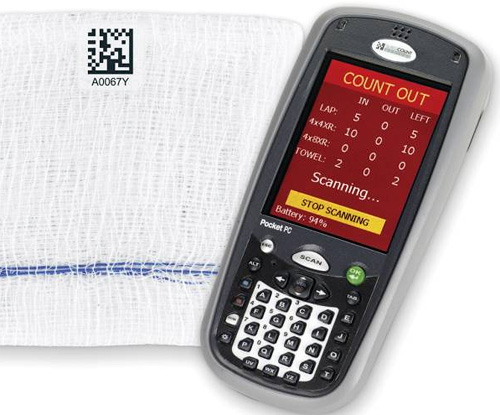
By Andrew Liszewski
We’ve all heard or even seen the hour-long TLC specials about surgical instruments being accidentally left inside a patient. But even something as simple as a sponge can lead to a deadly infection if forgotten, and that’s why every single sponge has to be accounted for. But instead of relying on a nurse to manually count the sponges before and after an operation, the Safety-Sponge system from SurgiCount employs special bar codes printed on every sponge that are scanned into a PocketPC computer before and after they’re used.
Essentially, the system works much like a grocery store check-out counter – every laparotomy and gauze sponge is pre-labeled with an individual and unique bar code (in this instance, a 2-D data matrix label) and a scanning SurgiCounter is used to read the labels. Unlike other technologies, there is no major change in a hospital’s established AORN manual counting practices and procedures. And no other technology can offer documented time stamps of when every item was counted in and out.
Since every single sponge has a unique bar code, the system can even alert the operating room staff if the same sponge has been scanned twice. I guess as long as the special barcode-branded sponges aren’t considerably more expensive than a regular sponge, there’s no reason for a hospital not to adopt a system like this. But then again I’m not a doctor, I just pretend to be one on the internet.
[ SurgiCount Safety-Sponge System ] VIA [ 7 Gadgets ]





I’ll never forget the time Frank Burns forgot to exteriorize a colon. Trapper and I laughed and laughed!
Then Trapper was replaced by a more boring doctor and we were never again so amused.
It sounds like an excellent idea. I just wonder how do you make sure you don’t fail to scan a sponge. They are very busy and you may have a doctor yelling get me this or get me that.
Sometimes when you come up with something new it causes more problems.
I wonder when we will read that the scanner device was left in a patient.